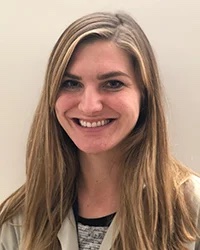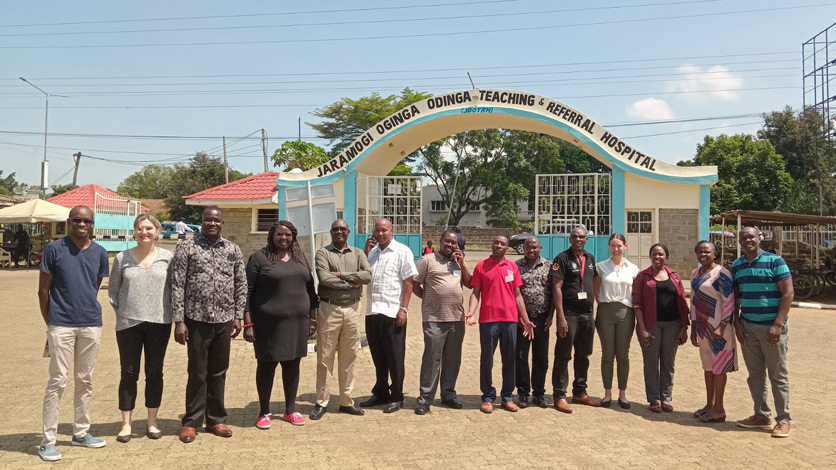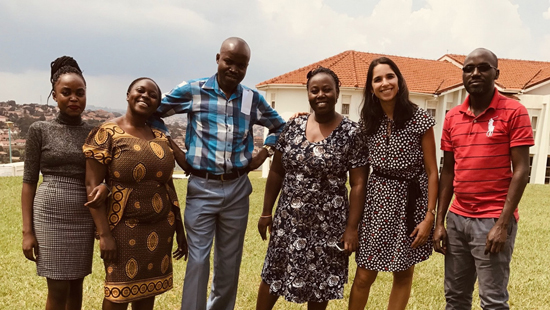Bidirectional Exchange Creates a True Global Health Partnership

When it comes to patient care, it’s not the equipment, the lab, or an institution’s financial resources that matter most. Rather, it’s a medical student’s ability to practice in a real-world setting that sets the standard. For student practitioners, especially those working in pediatrics at Northwestern’s partner hospital in Kenya, simulating real-world patient care is crucial.
Patient simulation, a curriculum devoted to hands-on learning through continual practice, translates students’ theoretical medical knowledge into the expert clinical skills they need. Northwestern University Feinberg School of Medicine and Ann & Robert H. Lurie Children’s Hospital of Chicago partnered with Bugando Medical Center in Mwanza, Tanzania, in 2007 to prove that the setting, more than the tools, sets students up for success.
When Colleen Fant, MD, MPH, pediatric emergency medicine attending physician at Lurie Children's and assistant director of Global Health Simulation at the Robert J. Havey, MD Institute for Global Health, asked her colleagues in Kenya and Tanzania about simulation programs, they said they wanted to find a way to access Northwestern’s resources so they could better care for children and their families in their communities.
“Any global health project really is a partnership and works to build capacity at scale in other countries,” Fant said. “So, while there may be a research component, it also should elevate clinical care by helping to train local providers on a particular advanced skill or specialized technique that they may not otherwise have access to.”
I'm smarter now because I know about things I wouldn’t otherwise because of teaching simulation in Tanzania and Kenya,”

A collaboration with Maseno University in Kisumu, Kenya, in 2020 meant making patient simulation-based education more widely available for training doctors by improving their capabilities through dedicated practice and faculty development.
Northwestern integrates simulation-based education into all aspects of its clinical education. From Lurie Children’s kidSTAR Simulation Lab to Feinberg’s Innovations Simulation Lab, students gain invaluable experience by practicing in-situ, or in their original setting, in their usual medical environments. This hands-on approach, common for most health care students training in Western-based medical schools, puts the classroom in a real-world context without the very real high stakes. Patient simulation provides an arena where residents are expected to practice and learn from their mistakes.
In many other parts of the world, medical education follows a hierarchical model, where the highest-ranking person guides the coursework and clinical care. This system can present challenges to providing care; there are only so many expert-level practitioners available to supervise, and residents often receive on-the-job training—learning by practicing on real patients. Since many medical schools have rapidly increased their graduating classes to help address health care provider shortages around the world, simulation programs help to reduce the burden that’s often placed on the expert who ultimately is responsible for students’ education and patients’ health.

Between virtual and in-person sessions at the Jaramogi Oginga Odinga Teaching & Referral Hospital, students had the opportunity to practice and keep practicing until they mastered the skills. The collaborative medical education partnership addressed gaps by training three Maseno University faculty members to independently run their own patient simulation courses for medical students.
While simulation education presents opportunities, it’s imperative to overcome the idea that institutions face a barrier to entry if they aren’t as financially resourced as Northwestern. Fant said that in places where resources are strapped, students find it challenging to add continuing education modules to their long list of responsibilities. especially when it’s on their own time and outside the scope of their job responsibilities.
“Many may think they need what we have here at Northwestern or Lurie. And while mannequins, vital-sign simulators, and medical supplies are indeed expensive, our work shows students and faculty that you don’t need a high-tech sim lab.” Fant said. “Anyone can do simulation. You just have to have a need and an interest.”
Fant she loves teaching a low-tech simulation curriculum. When she teaches in students’ clinical settings with a sack of flour, a doll, or a mannequin without supplies or additional technologies, the burden falls on her to ensure the students treat this item as an actual patient. These simulation sessions occur where care happens, which means that when medical equipment is required, students must find it and decide on the appropriate course of action. Fant said experiencing this realism furthers the simulation experience—for students and educators.
“That’s really where we've been kind of focusing our efforts, not only exposing people to simulation but also educating local experts,” Fant said. “And we show in-situ how you don’t need all the bells and whistles to do this. You only need the idea of simulation, which is practicing patient scenarios in a safe environment.”
“I'm smarter now because I know about things I wouldn’t otherwise because of teaching simulation in Tanzania and Kenya,” she said. “I saw a kid the other day who had dengue fever. I’d not seen that in my clinical work, but I have in simulation.
“We’re a global community with a global experience,” Fant said. “While it’s different for everyone, our work shows how there’s always a common thread.”
Colleen Fant, MD, MPH is a member of Robert J. Havey, MD Institute for Global Health and Northwestern University Clinical and Translational Sciences Institute (NUCATS).

